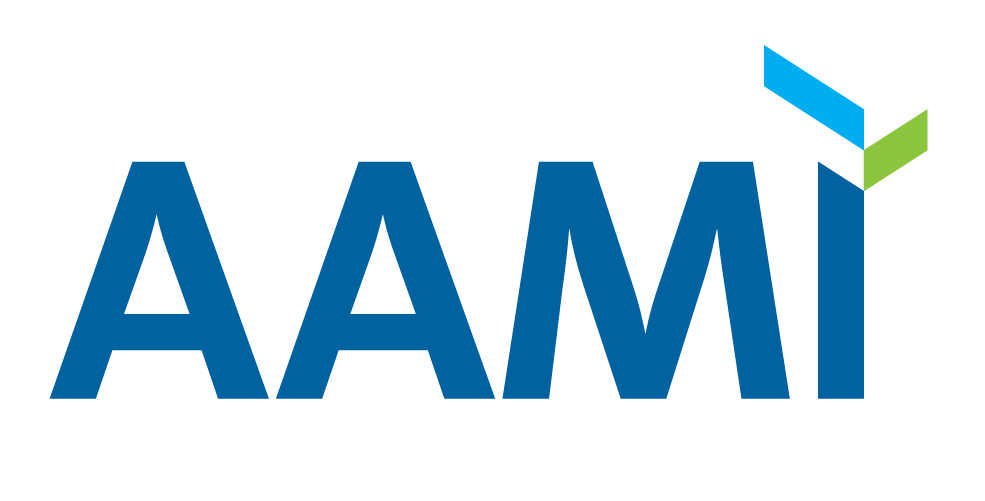AAMI Publishes Provisional Health IT Standard, Seeks Feedback
November 2, 2018
Contact: Gavin Stern: gstern@aami.org, 1-703-647-2781
The use of IT systems to support healthcare delivery promises to make that care more efficient and accessible, and to achieve better patient outcomes. But health IT systems are not without risk—poor design, incorrect configuration, or improper use can hold back this technology’s benefits and create hazards to patient safety and health.
That’s why, in order to help promote the safety and effectives of health IT systems, AAMI has published a provisional standard: HIT1000-1(PS):2018, Safety and effectiveness of health IT software and systems—Part 1: Fundamental concepts, principles, and requirements. It was developed to help healthcare community stakeholders (vendors, healthcare delivery organizations, and clinicians) identify and minimize patient risks to health IT systems so they remain safe and effective from design and development through implementation, use, and ultimately retirement.
HIT1000-1 is intended as the first in a four-part series, with subsequent editions focusing on quality systems, risk management, and usability principles as they relate to health IT.
“This provisional standard, HIT1000-1, lays down the fundamental requirements and concepts for managing the safety and effectiveness of health IT systems and software,” said Joe Lewelling, vice president of standards strategy and emerging technology at AAMI. “Our goal with these standards is to facilitate shared responsibility and cooperation among all the stakeholders and entities involved with health IT.”
HIT1000-1 is the product of AAMI’s Health IT Committee, which was established to address the absence of needed standards in this area for health IT systems. Envisioned to “not reinvent the wheel,” the HIT1000 series is built upon existing standards from other industries, adapting them to the particular characteristics of health IT software and systems.
Mark Segal, PhD, co-chair of the committee and principal at Digital Health Policy Advisors, LLC in Chicago, said that HIT1001-1 “sets the stage” for the further work that will be published throughout next year by defining high-level concepts, principles, and terms intended to help orient those who are involved in developing, implementing, or using health IT.
“The healthcare system is increasingly being digitized, and the associated health IT is generating data relied upon through the healthcare system by providers, patients and consumers, researchers, and payers. That’s led to an increasing desire to make sure that the use of this technology is safe and effective for its intended purpose,” Segal said. “Most current health IT software is not regulated by the Food and Drug Administration, and the current standards used for the medical device industry just aren’t a good fit for health IT software. We encourage all stakeholders to test drive HIT1000-1 and provide their feedback.”
The HIT1000 series represents “the beginning of a new type of standard,” said co-chair David Classen, chief medical information officer at PascalMetrics, because it covers the entire life cycle of healthcare technology from its development to its use and eventual decommission.
Current health IT standards for quality and safety are used only by the vendors as they develop their health IT software. However, much of the impact on the safety and usability of software is determined by the actions of those who implement and customize it, Classen said.
“In terms of safety, health IT software is bit of a Wild West,” Classen said. “In contrast to prior standards, the HIT1000 series focuses on the software’s entire life cycle and the full range of applicable stakeholders driving actions that affect safety.”
The development of the HIT1000 series represents a major step in realizing the recommendations of the Institute of Medicine’s 2011 report, Health IT and Patient Safety: Building Safer Systems for Better Care, which called for a shared responsibility between developers and users in ensuring the safety of health based on longstanding aviation industry practices.
“Healthcare IT, like other higher risk industries, needs software developed and implemented using appropriately tailored safety standards to drive safe use. The HIT1000 series addresses an obvious need outlined in the IOM report,” Classen said.
But while general quality system and risk management principles are covered in many existing standards increasingly used by health IT software developers, they don’t offer details specific to health IT systems or provide the needed focus on patient safety, health, and security across the product life cycle, Lewelling said
“Provisional standards are intended for trial use and must be replaced, withdrawn, or advanced as full American National Standards within two years” explained Lewelling. “AAMI is making this provisional standard available for free so that people can use it and let us know where it works and where it can be improved.”
Other parts of the series addressing quality systems, risk management, and usability are expected to be published in 2019, also as provisional standards.
AAMI (www.aami.org) is a nonprofit organization founded in 1967. It is a diverse community of more than 10,000 healthcare technology professionals united by one important mission—supporting the healthcare community in the development, management, and use of safe and effective health technology. AAMI is the primary source of consensus standards, both national and international, for the medical device industry, as well as practical information, support, and guidance for health technology and sterilization professionals.
